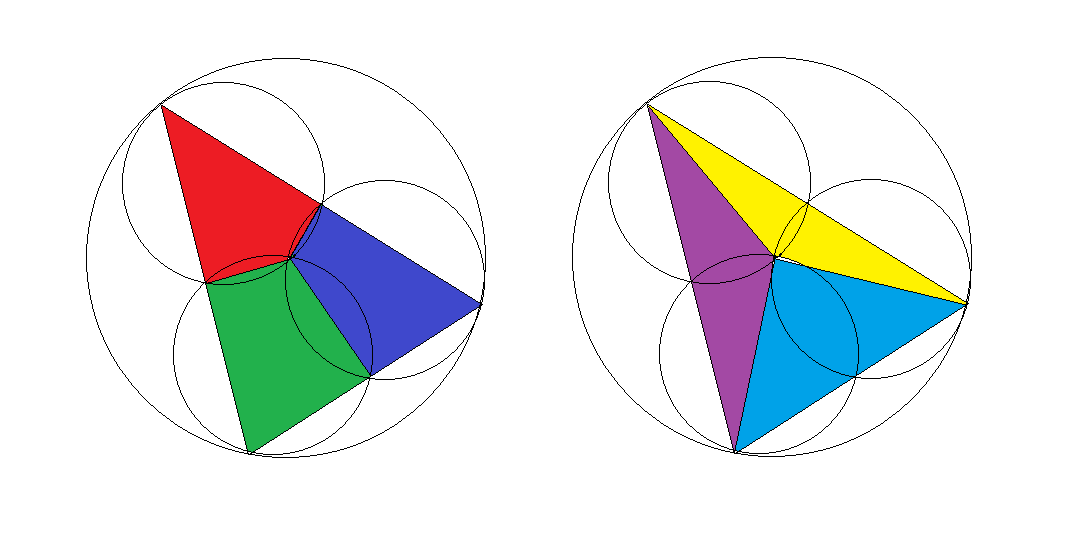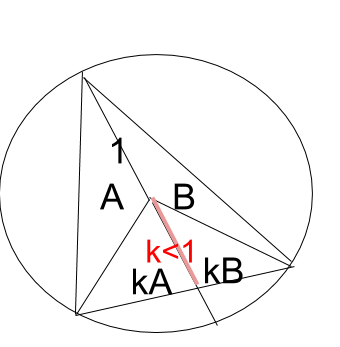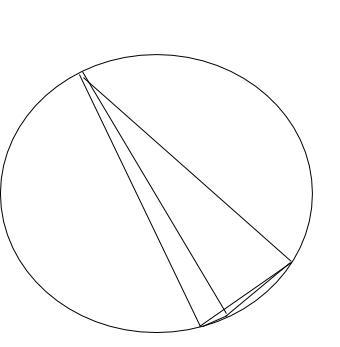Tangling Circles

Three circles with the same radius intersect at the center of a bigger circle with twice the radius.
Lines are drawn from the intersection points where two small circles meet on the big circle such that they form a triangle, as shown above left. The triangle is then divided into 3 quadrilaterals by drawing the lines from the center of the big circle to the intersection points of the small circles: red, blue, and green regions.
Alternatively, the triangle can be divided into 3 smaller triangles by simply drawing the lines from the center to the vertices: yellow, purple, and cyan regions in the diagram on the right.
Suppose that the ratio of the area of the red region, the area of the dark blue region, and the area of the green region is .
Then, if the ratio of area of the yellow region, the area of the purple region, and the area of the light blue region is , where , compute .
The answer is 6.
This section requires Javascript.
You are seeing this because something didn't load right. We suggest you, (a) try
refreshing the page, (b) enabling javascript if it is disabled on your browser and,
finally, (c)
loading the
non-javascript version of this page
. We're sorry about the hassle.


Since the distance from the big circle's center to each triangle's vertex is equal to the big radius, this is also the triangle's center.
Hence, the lines from this center to the bases of smaller triangles will act as their bisectors, halving the areas of the yellow, purple, and cyan isosceles triangles.
Furthermore, by comparing between the two diagrams, it is obvious that red area = half yellow + half purple; blue area = half yellow + half cyan; and green area = half cyan + half purple.
Let x = y e l l o w / 2 ; y = p u r p l e / 2 ; z = c y a n / 2 . From the given ratio, we can formulate the equations for some constant k :
x + y = 1 1 k
x + z = 1 2 k
y + z = 1 3 k
Solving for the three variables, we will get x = 5 k ; y = 6 k ; z = 7 k .
As a result, the ratio of Y e l l o w : P u r p l e : C y a n = 2 x : 2 y : 2 z = 5 : 6 : 7 .
The answer is, therefore, 3 5 + 6 + 7 = 6 .